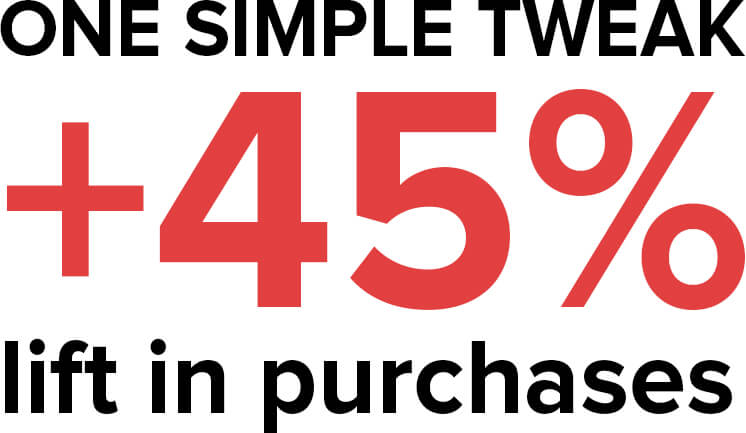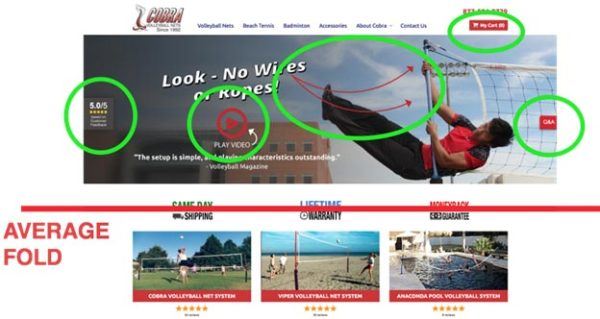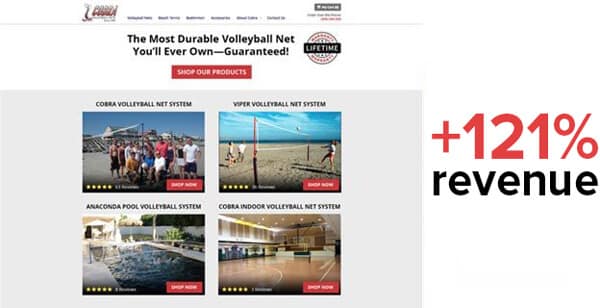What You Don’t Know About Your Customers is Killing Your Business
by Aden Andrus • May 7, 2020
How well do you know your customers, really? Odds are, it’s not half as well as you think.
Over the years, we’ve worked with countless ecommerce businesses, and if there’s one thing we’ve learned, it’s that your customers will always surprise you.
Sometimes, they respond to unexpected ad messaging. Other times, a great sale will fall flat or a client will increase their prices…and their sales at the same time.
But often, the most surprising discoveries have to do with your site experience.
Your website, after all, is where your potential customers decide whether or not they’re going to become actual, paying customers. If your site experience doesn’t sell your customers, that’s it.
Don’t believe me? Simply by tweaking messaging, we’ve seen 45% lifts in purchases.

We’ll get into the details of that story in a bit, but the fact of the matter is that in ecommerce, you don’t have a salesperson around to chase them around, answer their questions and get them excited to buy. All you have is your site, and if your site doesn’t work for your customers, it won’t work for your business.
In this article, we’re going to take a look at some of the common assumptions that ecommerce businesses make that keep them from connecting with their customers and winning them over. These assumptions could be keeping you from the ecommerce success you deserve, so let’s get started!
A Deadly Assumption
Unfortunately, most ecommerce businesses fall prey to the simple, but deadly misconception that “If I like it, then my customers will too!”
Sadly, that simply isn’t the case.
You see, you are not your customer. Even if you’re selling a “scratch your own itch” product, you’re still not your customer.
You may have a lot in common with your customers, but if your customers were the same as you, they’d all be running the same business as you…
Point is, you can’t base your website design on what you like. Sure, there’s nothing wrong with starting with a design that you like—every site has to start somewhere—but if you leave it at that, you’ll leave a lot of money on the table.
For example, when we first started working with one ecommerce client, they had put a lot of time and work into their site. They had a lot of ideas and elements that they believed their customers would love, but their conversion rate was pretty awful.
The problem? In their effort to give their customers as much information as possible, they were overloading them with options.
Just take a look at their home page! Before you even reach the fold, there are at least 5 elements fighting for your attention…and none of them actually lead you to a product page.

Before a customer made a purchase, this client thought they would want to read reviews, watch a video, check out the Q&A and more.
As it turned out, none of that actually mattered to their customers.
After testing different versions of their homepage, we discovered what sort of experience their customers really wanted. As a result, sales spiked by 69.2%!

This new design focused on what the client’s customers really wanted to see on the homepage. As a result, they were far more likely to stick around to make a purchase.
Similarly, after a series of tests where we removed different elements from another client’s homepage, we discovered that 6 of the 8 elements on their page were actually hurting sales.

This client thought they really understood their customers and had designed their page to meet their needs. In reality, though, their homepage was a real turnoff for their customers.
Once we identified what they’re customers really wanted, revenue-per-visit increased by a whopping 59%!

We’ve seen this story play out countless times. Businesses think they know what their customers want, only to discover that their assumptions were costing them thousands or millions in lost revenue.
Getting to Know Your Customers
So, how do you figure out what your customers really want? Things like looking at your analytics, talking to your sales team, interviewing customers and building effective buyer personas can all help, but at the end of the day, the only real way to get to know your customers is through testing.
You see, even the most in-depth buyer persona is still just a guess. Until you test that guess, you don’t know for sure what works for your customers and what doesn’t.
Testing Your Pages
For example, one of our clients had a video page that showed key information about their golf clubs. It was one of the most visited pages on their site…but it also had an incredibly high bounce rate.
At first glance, this didn’t make any sense. Given the traffic to the page, it seemed like it was exactly the sort of information that potential customers were looking for.
So why were they all bouncing after watching the video?
It was clear that we were missing something. To figure out what, we decided to test adding different, additional content to the page—things like a clear call-to-action and written information about the client’s products.
Eventually, we discovered that this client’s customers simply wanted more information. The video alone wasn’t enough to answer all of their questions.
By including additional written information, we were able to answer all of their questions and drive more people to the product page and to purchase—a lot more people.

Simply by giving customers what they really wanted, we increased conversion rates by 31.4% and revenue-per-visitor by 11.6%.
Testing different content on your site pages is where the rubber hits the road for your buyer personas. It’s how you turn educated guesses into money-making realities.
Testing Your Messaging
Good site testing doesn’t just stop with identifying what kinds of content your audience wants on a given page. You can test elements across your site or even use testing to get granular with your specific messaging.
For example, the client mentioned at the beginning of this article offers both pre-printed stickers and custom sticker design for their customers. They thought their messaging was fairly clear, but after looking at their analytics data, we weren’t so sure.
On each checkout page, customers had the option to either checkout or submit their information to receive a quote. To try and identify the right messaging for each button, we came up with 8 different variations and tested them against each other to see which language would produce the best results.
The winning variation increased purchases by 45% and produced an extra $11,000 in revenue while the test was running.

In the weeks and months that followed, this simple change in messaging has produced countless additional sales and custom design leads.
Why? Because, instead of guessing at what their customers would respond to, we tested different messaging and let their customers tell us (with their wallets) what sort of messaging worked for them.
Testing Site Elements
Of course, testing isn’t all about adding or optimizing elements on your site. Sometimes, what you really need is to get rid of things.
Remember, effective site design is all about giving your customers what they really want. If you have elements on your site that are blocking access to or distracting from the things your customers are after, it can really hurt sales.
For example, one of our clients sells unique, themed hats. A lot of their brand is built around their social media presence and “vibe”, so they naturally assumed that including social share logos and other elements that made them feel connected to the business would help sales.
Makes sense, right?
Unfortunately, just because something makes sense on paper, that doesn’t guarantee that things will work out that way in the real world. That’s why we test, after all.
So, with that in mind, we decided to see what would happen if we removed these potentially “distracting” elements from their website. It was a simple test, but the results were profound: conversion rates increased by 12.4%, leading to an extra $16,153 in monthly revenue!

This just goes to show why testing is so important. Even if you feel like you really understand your customers, their behavior on your site can still surprise you.
The only real way to get to know your customers—especially in terms of what they want from your site—is to test everything. Maybe your guesses are right, maybe they aren’t…but if you don’t test, you’ll never know.
Conclusion
When it comes to ecommerce, what you don’t know really can hurt you. In fact, it could be killing your business.
To figure out what your customers really want from your site you have to test everything—your homepage, page content, messaging, site elements…everything!
The examples we’ve shared here are just a few of the surprising discoveries we’ve made over the years. Even the most well-established and polished ecommerce businesses still have something to learn, which is why testing is critical for every business.
By the way, if you’d like to uncover hidden opportunities in your own site, let us know here or in the comments. We’d love to make you our latest success story!
How have your customers surprised you? Have you ever changed something on your site and seen unexpected results? Leave your thoughts in the comments.





